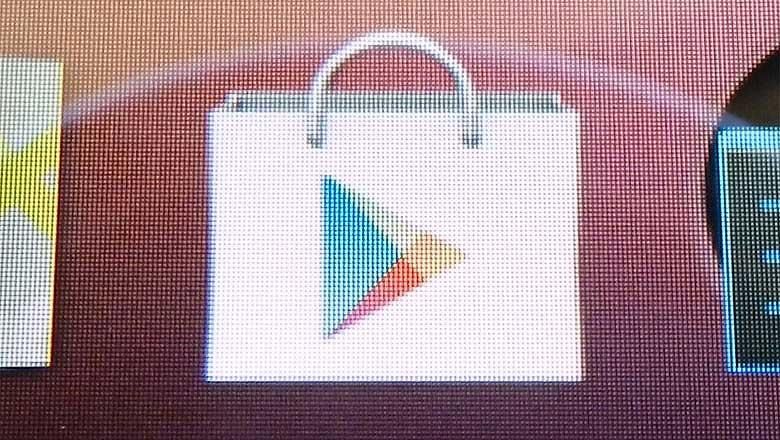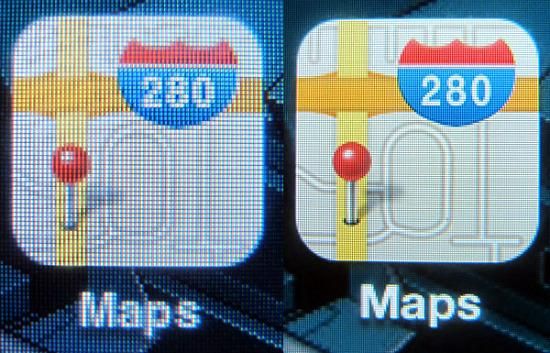One year ago, the very first smartphones with 1080p displays were only just hitting the market: HTC released its Butterfly/Droid DNA family, and only a few months after that we were seeing 1080p devices absolutely dominate flagship offerings from all the big Android players. Since then, even the walls between platforms have started falling down, and Windows Phone has joined Android in this crazy-high-res echelon.
But before this hardware actually arrived – heck, even while the first models were arriving – you couldn’t get a conversation started about 1080p displays on smartphones without someone ever-so-helpfully volunteering his or her opinion: “Well that’s just stupid. 1080p on something the size of a phone is totally pointless. You can’t even see the pixels on a 720p screen; what’s the point of fixing what ain’t broken?”
But the thing is – 1080p displays really did look better. Not night-and-day, maybe, but after working with a 1080p device it’s hard to deny that the picture is simply superior to a lower-res panel.
Why’s that? You don’t need to be able to consciously differentiate between pixel after pixel for your brain and your eyes to notice a difference. Vector-based text is a simply fantastic example of where 1080p screens can shine; when rendered on a 720p display, things will look “fine,” but all the extra detail you get the instant you switch over to 1080p starts delivering very real improvements. Even if you can’t put your finger on what’s changed, text suddenly appears crisper, more print-like, and maybe even cuts down on eye strain.
But now 1080p is old hat, with both 4K and 2K displays looming over the horizon. 4K will likely be tablet-only for the foreseeable future, but there’s been a lot of talk about 2K screens actually showing up on phones sometime very, very soon; in fact, it’s looking pretty darn likely that the first could launch in just a couple days.
As far as the actual pixel count goes, a couple different values have been thrown around (depending on things like aspect ratio), but for a good 16:9 example (fitting with 1080p), we have 2560 x 1440: some 3.68 million pixels, all on a screen that fits in your pocket.
And once again: everyone seems to think this is an AWFUL idea.
It’s not, guys. It’s really, really not.
I had assumed that it wouldn’t take long before a lot of those naysayers remembered the whole debate that followed the 720p to 1080p transition a year ago, and would quickly come around to the idea, but all this negative talk continues. I’m hoping I can convince you otherwise.
For starters, let’s lose this business of “but we don’t neeeeeed it.” So what? Harsh truth time: you don’t need a smartphone, period. Or if you have one, you don’t need one with an HD display at all. A monochrome QVGA screen is perfectly readable, after all.
These are gadgets we’re talking about, man. It’s all technology. It’s in their nature to push boundaries.
Does this mean there’s not a very real perceptual limit to the sort of resolution changes a human eye can distinguish between? Of course not, but like I was getting to when talking about 1080p and text, just because you can’t make out the pixels to begin with doesn’t mean that things won’t simply look “better” with more of them. All things being equal, we should welcome any kind of improvement along this line.
Oh! But what if things aren’t equal? More pixels means more power means dead batteries, right? Remember how the explosion in popularity of 1080p absolutely killed battery life? … me neither. In fact, I get better battery life with my Nexus 5 this year than my Nexus 4 last year.
Really, there are two factors to consider: pixel count, and screen size. Now, screen size is a real concern; early 2K displays promise to be phablet-sized, and the larger you get, the more power you’re going to draw. But pixel count? Pixel count – as far as an issue with battery consumption goes – is hugely overrated.
It’s very easy to get swept away with this talk of 2K and 2560 x 1440 screens – big numbers, sure – but in a relative sense, it’s just not that big a change.
When we moved from 720p displays to 1080p, we’re talking about an increase in pixel count of 125% – more than twice as many pixels.
The difference between 1080p and 2K is much more conservative – it’s only an increase of about 78%. By all logic, the switch to 2K should have a comparatively smaller impact on power consumption than the move to 1080p did.
Or how about this: I find a lot of parallels between smartphone resolution and wireless data speeds. Both are already higher than I require either to be, and the problem is less about me wanting more than it is about me wishing I made better use of the options I have now (i.e., watched more native 1080p content or lived in an area with better tower coverage).
But even if 20Mbps cellular data is more than enough for my needs, am I going to get all indignant when someone starts developing phones with 36Mbps data (which, like 2K, is about a 78% improvement)? I would hope not.
In any case, we haven’t even seen this hardware arrive, so we’re still very much ahead of ourselves. Is there a chance that the launch of 2K could happen very unlike the situation I’ve been laying out here, and there could be unknown negative consequences that greatly outweigh the positive? Though I don’t see that as being probable in the least, it’s still a possibility.
But thinking such an awful outcome would be likely? To believe that, you’d have to ignore pretty much everything we’ve seen in the past year from the spread of 1080p. I just can’t do that myself, though, and I don’t think there’s any good reason for you to be doing so, either.




